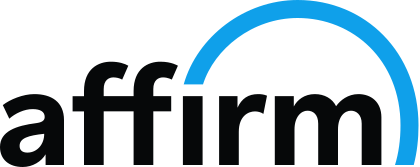 Although we live in the age of diversity and inclusion, many women report experiencing workplace bias, not only because of their gender, but also due to their race, sexual orientation, disability, or other aspects of their identity. And as one would expect, this compounded discrimination can affect workplace culture as well as the hiring process. Bringing awareness to these issues and working together can help you support diversity and inclusion, equality in the office, and minimize bias.
Although we live in the age of diversity and inclusion, many women report experiencing workplace bias, not only because of their gender, but also due to their race, sexual orientation, disability, or other aspects of their identity. And as one would expect, this compounded discrimination can affect workplace culture as well as the hiring process. Bringing awareness to these issues and working together can help you support diversity and inclusion, equality in the office, and minimize bias.
Microaggressions
Years of data show that women experience more demeaning and “othering” microaggressions at a significantly higher rate than men. For women and people with traditionally marginalized identities, these slights happen more often and tend to be worse. They may struggle to feel psychologically safe and “self-shield” by muting their voices, code-switching, or hiding important aspects of themselves. As a result, they are 4x more likely to feel burned out and 3x more likely to think about quitting.
Women: More likely to experience colleagues commenting on their appearance or telling them they “look mad” or “should smile more.” Twice as likely to be interrupted and hear comments on their emotional state.
Women with Disabilities: Far more likely to have their judgment questioned in their area of expertise and be mistaken for someone more junior.
LGBTQ: 5 times more likely to hide aspects of their personal lives.
Mistaken Identity and Code-Switching
Asian Women: 7 times more likely than white women and men to be mistaken for someone of the same race and ethnicity.
Black Women: 3 times more likely than white women and men to have to code-switch.
Career Development and Advocacy
Latinas and Black Women: Significantly less likely to report their manager regularly shows interest in their career development compared to women of other races and ethnicities.
Asian and Black Women: Less likely to say that someone in a more senior role has publicly praised their accomplishments or advocated for a compensation increase for them.
Overcoming Bias in the Hiring Process
The hiring process is one of the most critical areas where bias can manifest and diversion and inclusion philosophies can help. Studies show that when a woman’s name was replaced with a man’s name on a résumé, evaluators were 60% more likely to hire the applicant. To combat this and other forms of bias, companies and individuals can take the following steps to improve diversity and inclusion:
For Companies:
- Implement Blind Recruitment Processes: Remove names and other identifying details from résumés during initial screening stages.
- Diverse Hiring Panels: Ensure interview panels are diverse in terms of gender, race, and other identity aspects to minimize groupthink and bias.
- Bias Training: Regularly conduct training sessions on unconscious bias and inclusive behaviors for all employees, particularly those involved in hiring.
- Set Clear Consistent Criteria: Use structured interviews with clear, consistent criteria for evaluating candidates.
- Promote Internal Advocacy: Encourage senior leaders to publicly advocate for and sponsor women, especially those from marginalized backgrounds.
For Individuals:
- Self-Advocacy: Highlight your accomplishments and seek mentors and sponsors who can advocate on your behalf. Research your rights and legal options when issues arise.
- Resilience Training: Engage in training and activities that build resilience and stress management skills.
- Professional Networks: Join professional groups and networks that support women and marginalized individuals in your industry. Utilize available online and in-person resources to build opportunities and allies in your network.
- Continuous Learning: Invest in continuous learning and professional development to stay competitive and confident in your skills. Keep your resume, professional social media, and online presence up to date and consider using a professional resume writing service to stand out amongst the crowd.
- Support: Be cognizant of bias and equity imbalance in your workplace and support others in your community during times of both conflict and growth.
Addressing hiring bias and creating a workplace environment that values diversity and inclusion requires ongoing effort and commitment from both companies and individuals to commit to diversity and inclusion principles. By recognizing the unique challenges faced by women, people of color, and marginalized groups, and taking proactive steps to overcome these obstacles, we can build a more equitable future for all.













